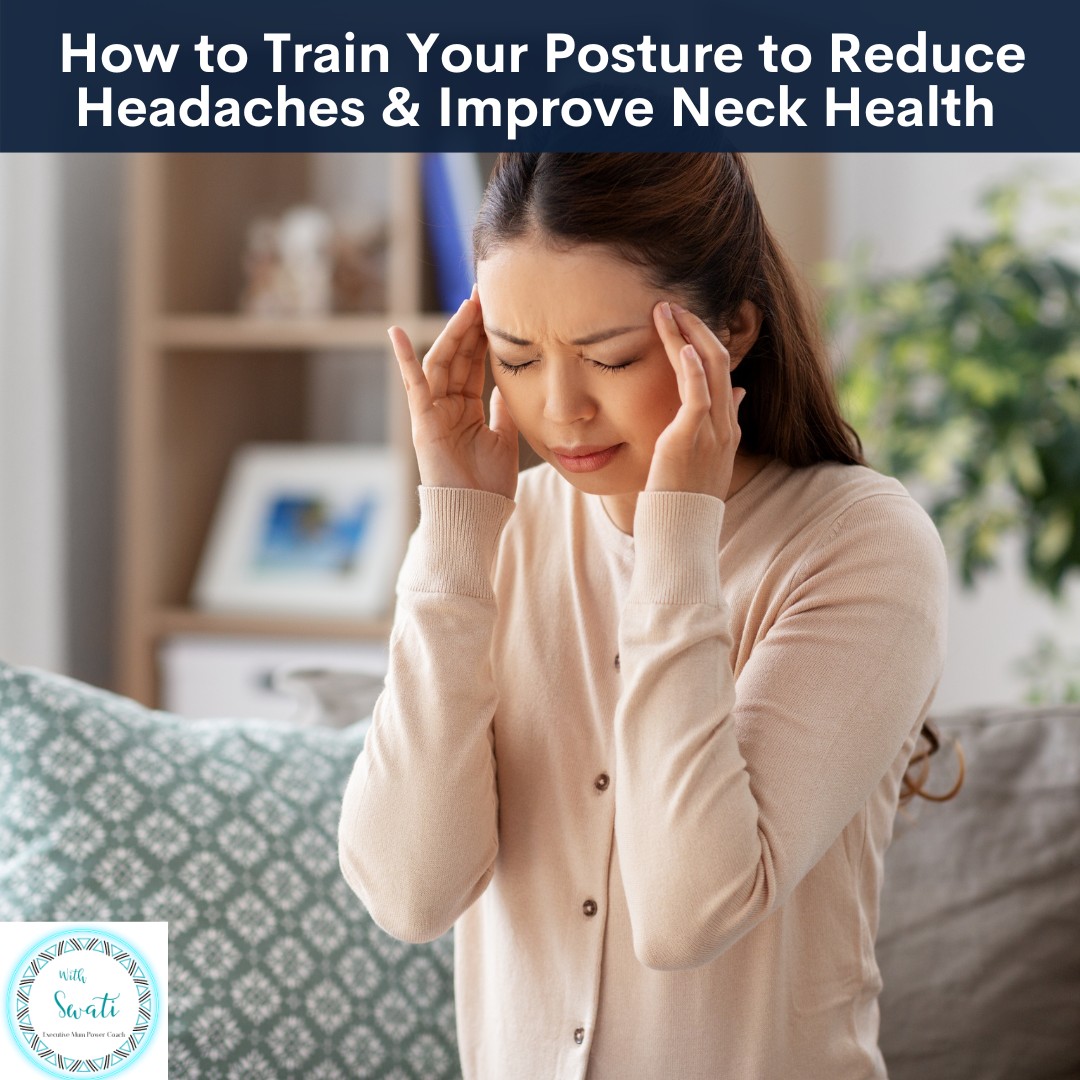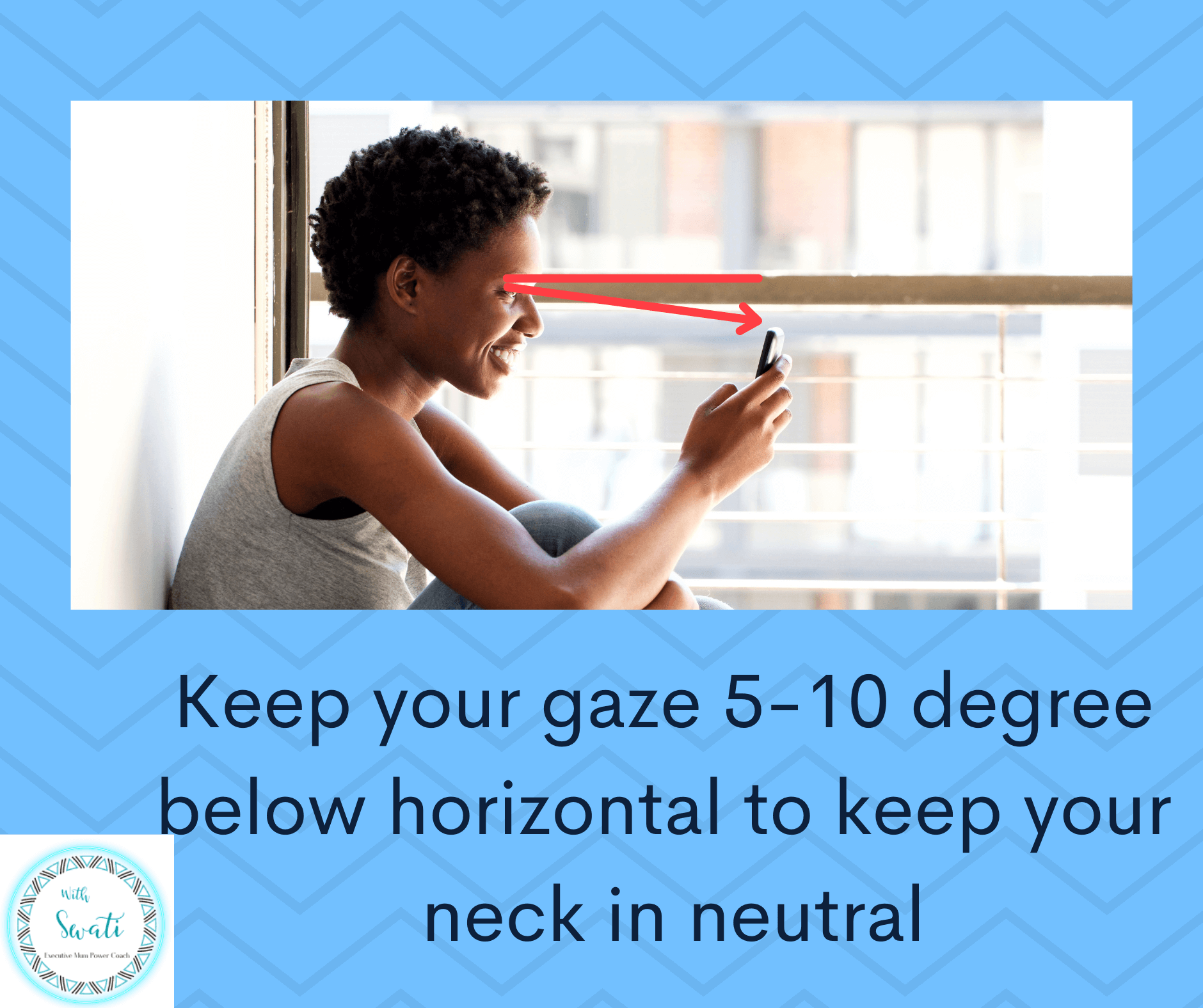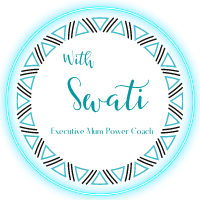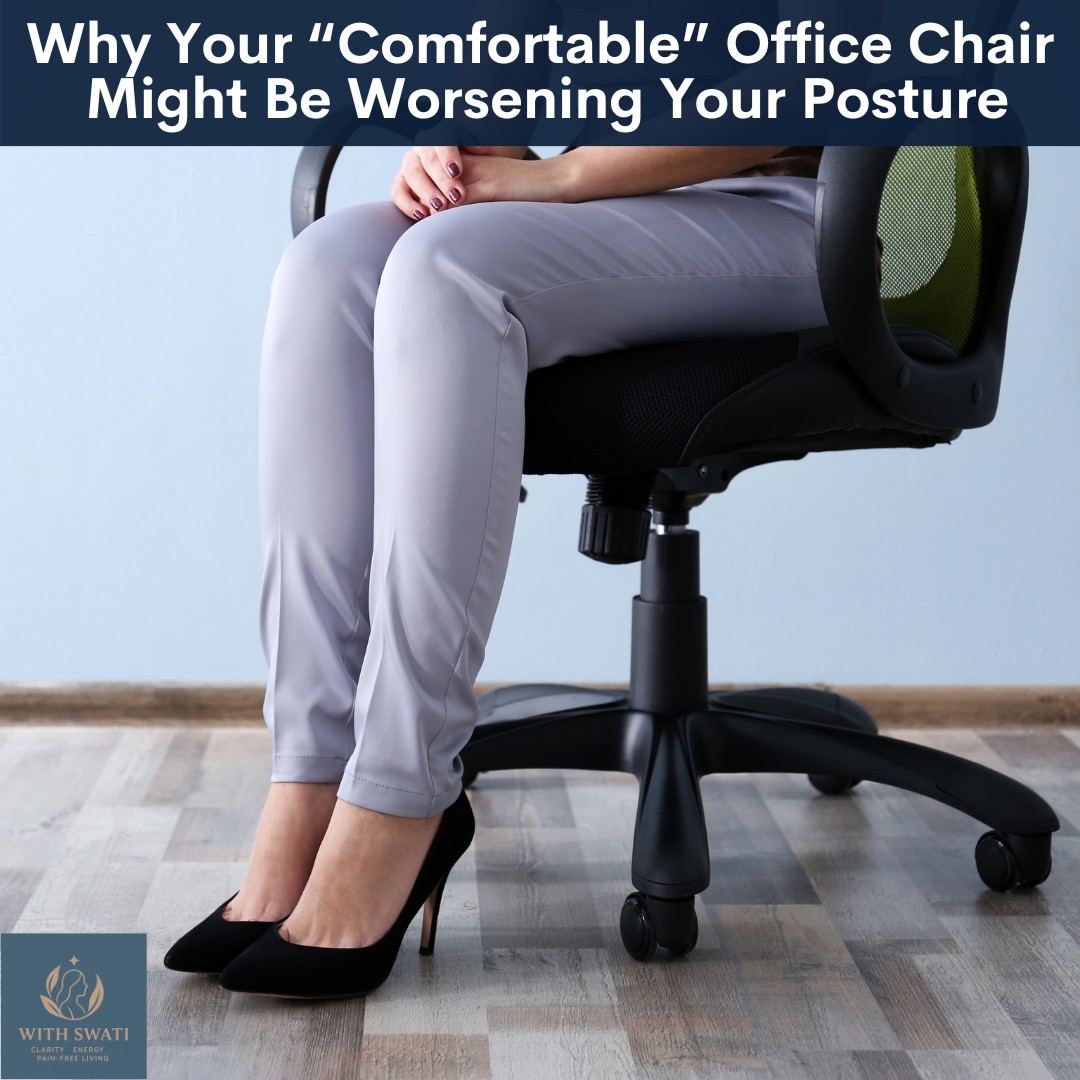
You know that dull, tight ache that creeps up your neck by late afternoon? ... Yeah … That one. It shows up quietly while you are on your third Zoom call or after bending over the sink to clean up yet another mess. And by dinner, it’s bloomed into a full-on headache, right behind your eyes or pulsing at the base of your skull. You tell yourself it’s just stress. Or hormones. Or not enough water.
But deep down … you wonder if something else is going on.
If you are anything like I was, juggling deadlines, managing a household, running from task to task with barely a moment to breathe, it’s easy to overlook how your body is holding it all. The posture you default to during chaos. The way you slump when you’re exhausted. The tension that builds without you noticing until it screams through your head and neck.
You don’t need a new prescription or a major lifestyle overhaul. What you do need is a gentler, smarter way to train your posture to support you through the pressure, not add to it. Let’s walk through that - together in this blog.
Awareness Is the First Step (No Perfect Posture Required):
The goal isn’t to sit like a statue. It’s to notice how you are holding your body, especially when you’re stressed, rushed, or tired. That’s when the head starts jutting forward and shoulders creep up.
Try This: Set a phone reminder for a posture reset every 90 minutes to check in. Ask: Where is my head? My spine? Am I clenching my jaw? Breathe, reset, and gently realign.
Learn more here on "How do you know if you have a good Sitting Posture?"
Your Head Isn’t Light And Your Neck Feels It:
Here’s a quick reality check: your head weighs around 10–12 pounds. For every inch your head leans forward, it adds up to 40–60 pounds of pressure on your neck and upper back. That tension creates muscle fatigue, nerve compression, and eventually headaches that feel like they’re starting at the base of your skull or behind your eyes.
Try This Instead:
Gentle posture awareness throughout your day beats trying to sit perfectly still. Start by bringing your ears in line with your shoulders with a chin nod. Chin nods are simple postural correction exercise to strengthen the core (deep) muscles of your neck and reduce forward head posture. Look at a point in front of you and bring your gaze down by 5 to 10 degrees. Breathe deeply for one minute. Its subtle, but quite effective as this gentle nod aligns your cervical spine in a neutral posture. This chin nod is also applicable to correcting your neck posture throughout the day and also when looking at a phone or your laptop screen (as shown in the picture below):
Gentle posture awareness throughout your day beats trying to sit perfectly still. Start by bringing your ears in line with your shoulders with a chin nod. Chin nods are simple postural correction exercise to strengthen the core (deep) muscles of your neck and reduce forward head posture. Look at a point in front of you and bring your gaze down by 5 to 10 degrees. Breathe deeply for one minute. Its subtle, but quite effective as this gentle nod aligns your cervical spine in a neutral posture. This chin nod is also applicable to correcting your neck posture throughout the day and also when looking at a phone or your laptop screen (as shown in the picture below):

Gentle Core Activation Supports Neck Alignment:
If your core is disengaged and your upper back is slumped, your neck picks up the slack. Over time, this compensation leads to trigger points, poor circulation, and increased sensitivity to pain.
Try This Instead: Train from the ground up. Engage your core gently, keep feet flat, and lift through your spine. Think of lightly zipping up your belly button. Pair this with relaxed shoulders and a tall spine.
Movement is the Missing Link in Most 'Posture Fixes':
It’s not just about sitting upright. You need to keep moving. Static positions, even good ones can create strain. Your posture adapts through micro-adjustments and movement throughout the day. That’s what helps your nervous system recalibrate and keeps tension from building.
Try This Instead:
Incorporate daily movement resets: shoulder rolls, chin tucks, and upper back stretches. Just 2 minutes every hour can shift your posture and reduce headache frequency.
Incorporate daily movement resets: shoulder rolls, chin tucks, and upper back stretches. Just 2 minutes every hour can shift your posture and reduce headache frequency.
If you are tired of guessing your way through the tension there’s a gentler, more effective way to start feeling better. I have put together a Cervicogenic Headache Course was made with you in mind busy, brilliant, tired of the pain, and finally ready for relief that lasts. This course gives you a step-by-step plan to reduce neck-driven headaches and improve your posture without adding more to your plate.
If you like this blog and want to be notified about new blogs as soon as they are published, subscribe to my mailing list below.
I would love to see you around the internet! For other places you can explore more about me: https://withswati.com/page/link
















0 Comments